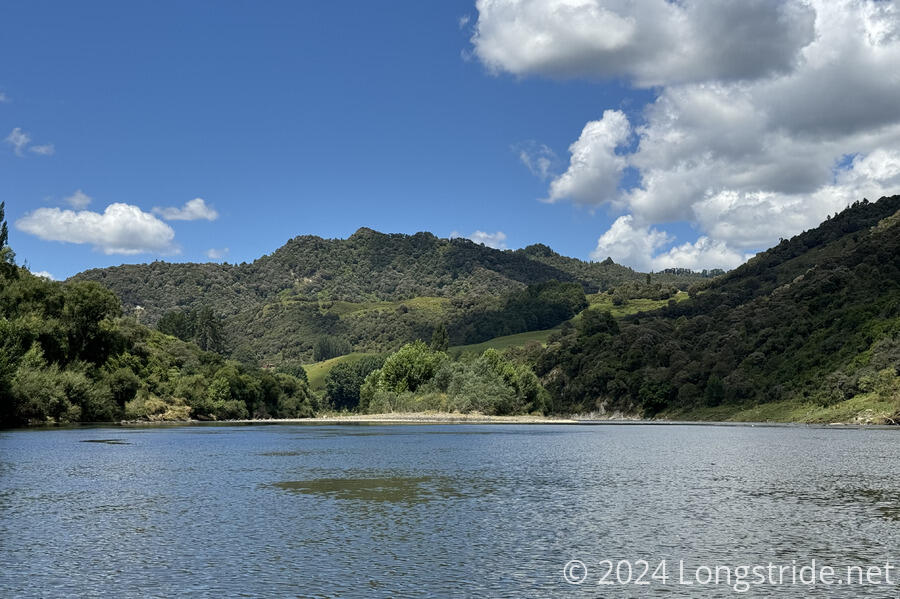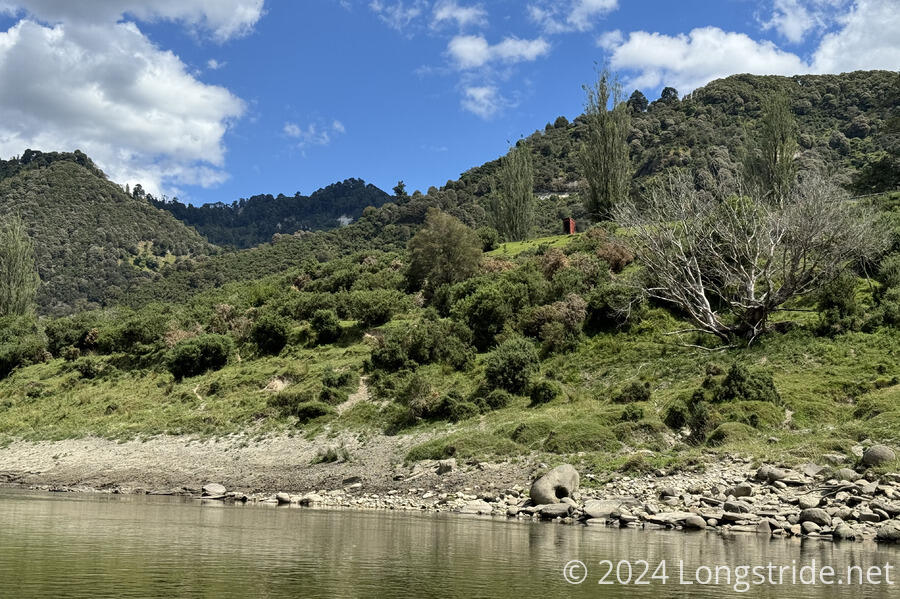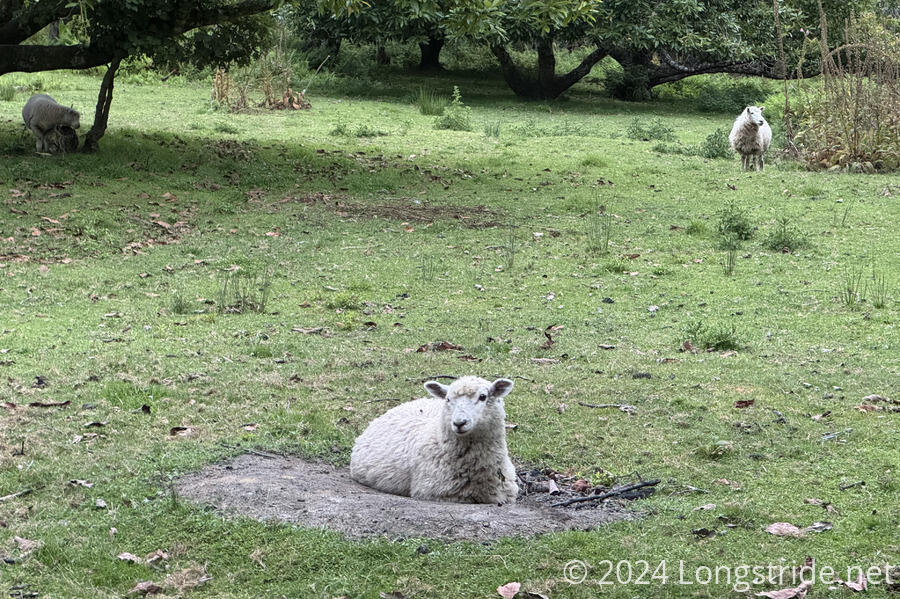Our third day on the Whanganui River took us through several interesting rapids, including the notorious 50-50 rapid, and we quickly progressed downstream.
Like yesterday, CareFree and I resumed our paddle down the Whanganui River shortly after 9 am, to quite excellent weather. It was sunny out, with only a few clouds. (Naturally, that meant it was hot and exposed for most of the afternoon, but at least rowing a boat is easier than hiking with a heavy pack.)
As I feared, I developed a small blister below my left ring finger, and a larger one on my right. This made it harder to hold the canoe paddle today, which was problematic because of the rapids we had to go through.
After a few smaller rapids, we hit the one we’d been warned about from the start: “50-50”. As we approached, we saw one canoe parked on a sand bank, with Bryce and Hannah bailing out water. Two other canoes were just ahead of us; we gave them space and watched what they did. And after they made it through successfully, we started our run.
We entered the rapid towards the left bank of the river. The first few waves splashed across the front of the boat, to little effect, though it was enough to get our boat to start rocking up and down. After, the waves were higher and more vigorous, and one or two big ones splashed in, getting me wet and flooding the inside of the canoe. But we kept furiously paddling, and then we were through. We had collected a fair amount of water, but we were still afloat. Success!
We later learned that Bryce and Hannah had almost made it through, but a little too much water got in their boat, filling it up to the lip. It stayed “floating” thanks to the buoyancy of their barrels, but they had to go ashore to bail the water out. Besides them, we only heard of one other canoe that had a problem, from someone who was unprepared because they thought the prior rapid was 50-50, and they similarly filled up with water and sank.
There were several more rapids today, less difficult than 50-50, but challenging in their own way. One, we followed current too close to the shore, and went under low-hanging willow branches. (Fortunately, we didn’t get hit by the branches, though only because CareFree ducked, and I held my paddle up to keep them from hitting me.) Other rapids had us threading between snags or debris or rock walls, sometimes with very shallow water; we scraped the bottom of the boat at least once or twice.
We continued to see the occasional goat on the hills flanking the river, which I think may have gotten a little less steep than further upstream. We also passed a red shed — I assumed a privy — that had a great view of the river. We’re definitely seeing more evidence of farms along the river, where further north, it was clearly all wild.
In the afternoon, some clouds blocked the sun, making it easier, at least until the tailwind we had turned into a very strong headwind that started blowing us backward when we briefly stopped paddling. That was the majority of the last hour of the day, which really tired us out, since we had to paddle rather hard to keep our forward momentum.
Today’s campsite is at The Flying Fox, which is only accessible via trail up from the river, or a small cable car from the small car park on the opposite bank. The place has cabins, and provides camping space for hikers. Continuing the clear trend, the campsites were even further away (and up) from the landing than yesterday, and there was a stile along the way.
The owner of the place was quite chatty as she showed us around. She said that there were no more rapids ahead, and that it’d be easy cruising down the river from here. CareFree was very happy to hear that news. (Me a little less so; I enjoyed the rapids a bit, but it’ll be good to not have to worry about capsizing over the next two days.)
We were among the first to arrive, and got our tent set up in a nice spot under a tree. (It was my second choice of spots; the first one was flatter and had better tree cover, except it was directly under an avocado tree, and I didn’t want to risk large fruit falling on the tent.)
Also there, besides a group in the cabins for a retreat, were a bunch of chickens and sheep. We were warned not to leave any food on the ground, or the chickens would eat it. Given the way they hung around the picnic tables, I suspected they fed themselves quite well.


